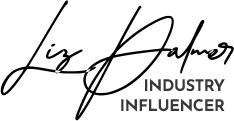The “Silver Linings” are real when it comes to fine wine. Despite 2021 being an unprecedented year due to COVID lockdowns, volatile markets, and Brexit challenges, it has been a record-breaking year for fine wine investment.
Both Champagne and Burgundy have an excellent final quarter, with Champagne gaining 22.98%, according to the Liv-ex Champagne 50 index, and the Burgundy 150 posted a 11.19% quarterly gain in advance of the upcoming 2020 vintage en primeur releases. The fine wine market certainly shows encouraging signs that a brighter future is ahead.
According to the Liv-ex Bordeaux 500 Index, over the last 18 months, there has been a resurgence of interest not only from those who have been building their wine portfolios over the longer term but also from new investors.
There are some big investors looking into this alternative-asset class including Warren Buffett himself, so I thought it would be a good idea to investigate further. Cult Wines Investment came on top of my searches.
About Cult Wines Investment
Founders Tom and Phil Gearing launched the Cult Wines platform in London during 2007 with the idea to revolutionize the way fine wine investment works and make the asset class more accessible. Not only is Cult Wine Investment the global leader in fine wine collection and investment management, but they are also on a mission to make investing in wine as enjoyable and rewarding as the wine itself. The leadership team have a deep-rooted passion for fine vintages, and close relationships with prestigious and respected growers, as well as market-leading investment expertise.
Enters “Cult Wines” Americas
Cult Wines enters the North American market in 2021 with headquarters in New York and Toronto, as one of the first wine investment platforms with a special focus on US and Canadian investors.
“The US is a big player in the auction and collectors’ market but historically has been underserved in the wine investment market,” describes Tom Gearing, the CEO and co-founder of Cult Wines.
“Historically, the wine investment category has been perceived as only for the wealthy, or those with considerable wine knowledge. We know that is not the case and are enabling more people to invest effectively while maintaining the client service, impeccable standards, and returns for which we are known,” said Atul Tiwari, CEO Cult Wines Americas.
Cult Wine Investments website: www.wineinvestment.com
Here is a list of the Americas leadership team and either wines they have really enjoyed or regions they love.
Tom Gearing, Global CEO

Tom Gearing oversees the company’s overall strategy, global operations, and technology innovation. Tom has grown this start-up to an award-winning global company with $390 million assets under management (AUM) and 80+ employees in six offices including: United Kingdom, North America, and Asia Pacific.
Tom has been regularly quoted in the New York Times, Financial Times, Wall Street Journal, and Forbes. As well as being the recipient of numerous awards, he has received the Queen’s Award for Enterprise in the International Trade and the Spear’s 500. He also holds a WSET Level 3.
Tom’s Favorite Wines:
Tom enjoys chardonnay and pinot noir, and at the same time, he likes to try as many different styles and grape varieties as possible. His most memorable vinous experiences to date are Petrus ’61 en Magnum, Liger Belair La Romanee ’09 and Domaine Leroy, Richebourg ’03.
Atul Tiwari, CEO, Americas

Atul Tiwari leads the team and is responsible for the overall strategy and development of Cult Wines Americas. Hailed by Investment Executive as ‘having a knack for knowing what’s next.’
As former CEO of Vanguard Canada, Atul and his team helped pioneer ETF investing in Canada and grew the company to $30 billion in assets over 7.5 years. Prior to Vanguard, he was the founding President of BMO Exchange Traded Funds. In 2018 he received the Indo Canada Chamber of Commerce award for Corporate Executive of the Year and has twice been named to Wealth Professional’s annual list of People to Watch in the industry. Atul is a member of the Independent Review Committee for Mackenzie Funds, a Director of the D.D. Foundation, Atul is also a member of the Advisory Council for the CFA Society of Toronto and an Honorary Trustee of the Royal Ontario Museum.
Atul has previously managed a 4,000-bottle cellar of Bourgogne for Confrerie des Chevaliers du Tastevin (Toronto). It’s interesting to note that he also has a law degree from Osgoode Hall Law School and has practiced in both London (UK) and Toronto before transitioning to finance.
Atul’s Favorite Wines:
Atul has a passion and is very knowledgeable on Bourgogne, in addition he enjoys Bordeaux and Italian wines.
Carrie Tuck, CMO, Americas

Carrie has spent nearly two decades working in public relations and marketing for multimillion-dollar brands and start-ups within the financial services industry.
Prior to joining Cult Wines Americas as Chief Marketing Officer, Carrie was the Head of Marketing for Vanguard, Canada and was instrumental in building the brand in the region. Throughout her career, Carrie has held various senior positions at asset management and fund companies, where she ran marketing, product and client service. Carrie also holds a Bachelor of Arts (Honours) from Concordia University.
Favorite Wines:
Carrie likes to experiment with wine, so she seizes opportunities to try new wines whenever she can.
Jonathan Stevenson, EVP, Americas

Jonathan brings over ten years and extensive experience in the alternative investment sector of fine wine to his role of Executive Vice President at Cult Wines. In 2021, he was appointed to oversee Cult Wines’ global expansion into the Americas and is responsible for growing the client base.
Previously, Jonathan was the Sales Manager for the UK sales team. He began his career at Cult Wines as a Portfolio Manager after graduating from Newcastle University (UK) with a degree in Marketing and Management.
Favorite Wine:
Vega Sicilia Unico
– Up Next –
Cult Wines Americas – The Future of Fine Wine Investment [Part 2]
I will explore and do a deeper dive into this growing alternative-asset class, and explore Cult Wine’s new investment platform how it makes investing in fine wine more accessible!
#wine #finewine #wineinvestment #alternativeinvestment #winenews #winelovers #winecollectors #champagne #bordeaux #burgundy #finewinelovers #wineindustry #winebusiness #winetrade #winetrends #vin #frenchwine #winemarket #winenews #wineeconomics #vintagewine #wineinvestors #cultwines #cultwinesamericas #cultwinesUSA #cultwinescanada #cultcru #bourgogne #mycultcollection #winewednesday
Disclaimer
Past performance is not indicative of future success; the performance was calculated in GBP and will vary in other currencies. Any investment involves risk of partial or full loss of capital. The Cult Wines Index is a hypothetical tool. The results depicted here are not based on actual trading and do not account for the annual management fees that may be charged to a Cult Wines customer which ranges from 2.95% to 2.25% depending on the size of the portfolio, and there is no guarantee of similar performance with an investor’s particular portfolio.

![Cult Wines Americas – The Future of Fine Wine Investment [Part 1]](https://liz-palmer.com/wp-content/uploads/2022/02/Cult-Wines-Liz-Palmer.jpg)



